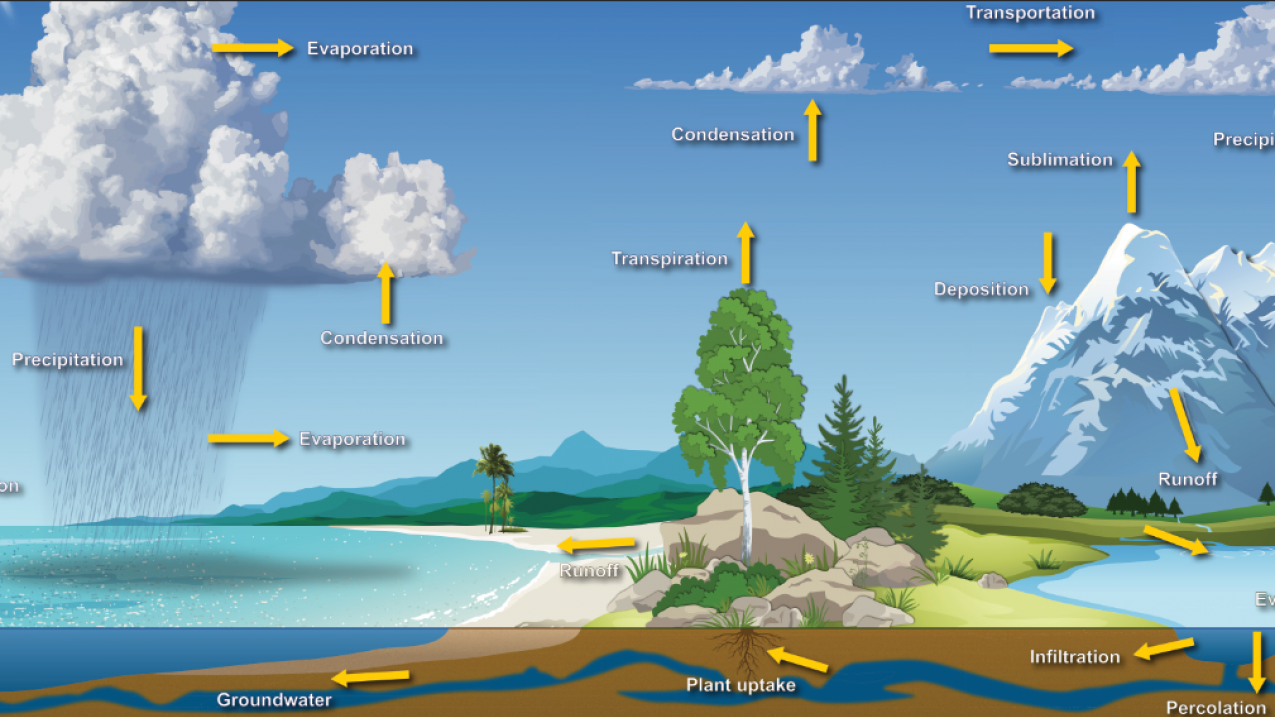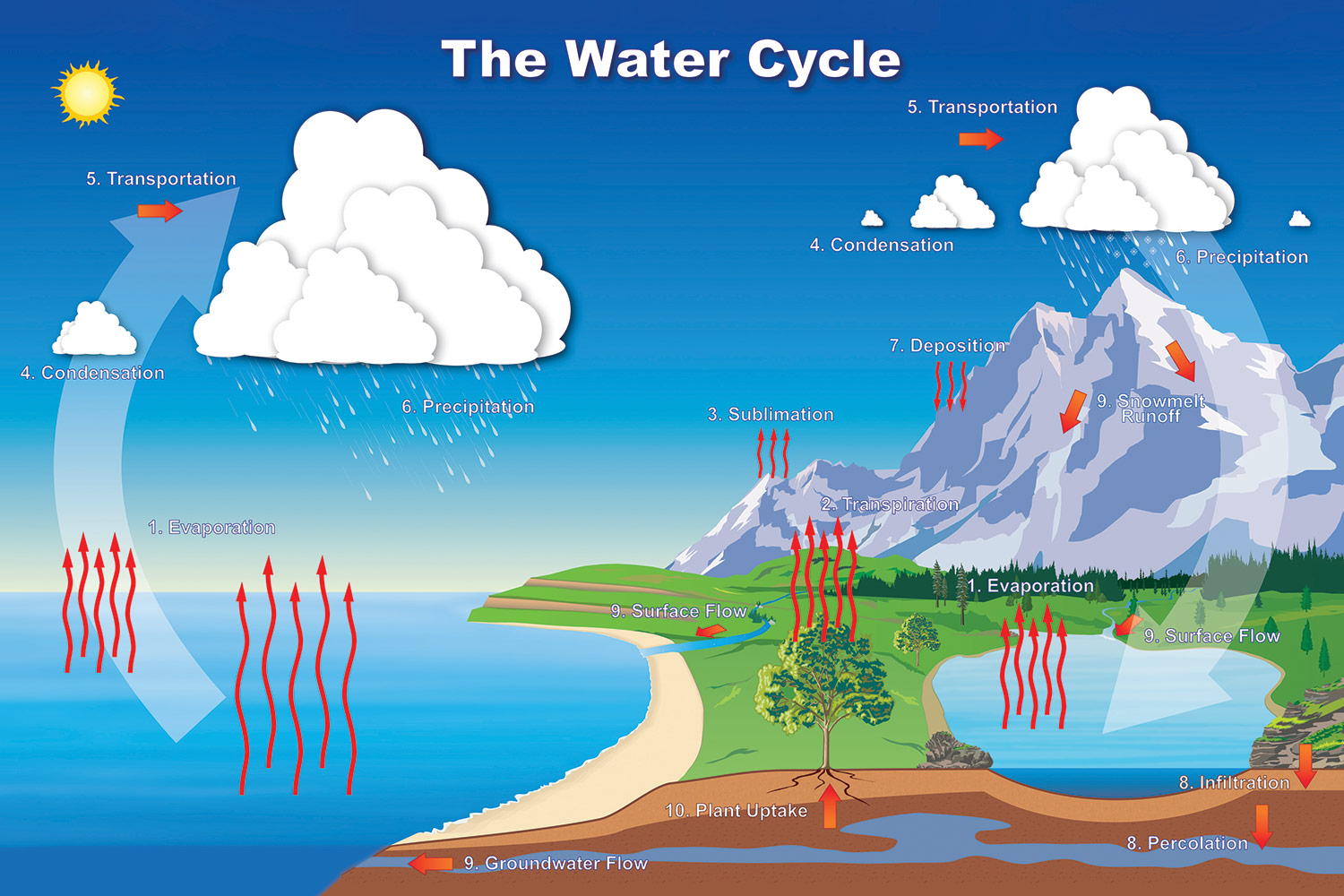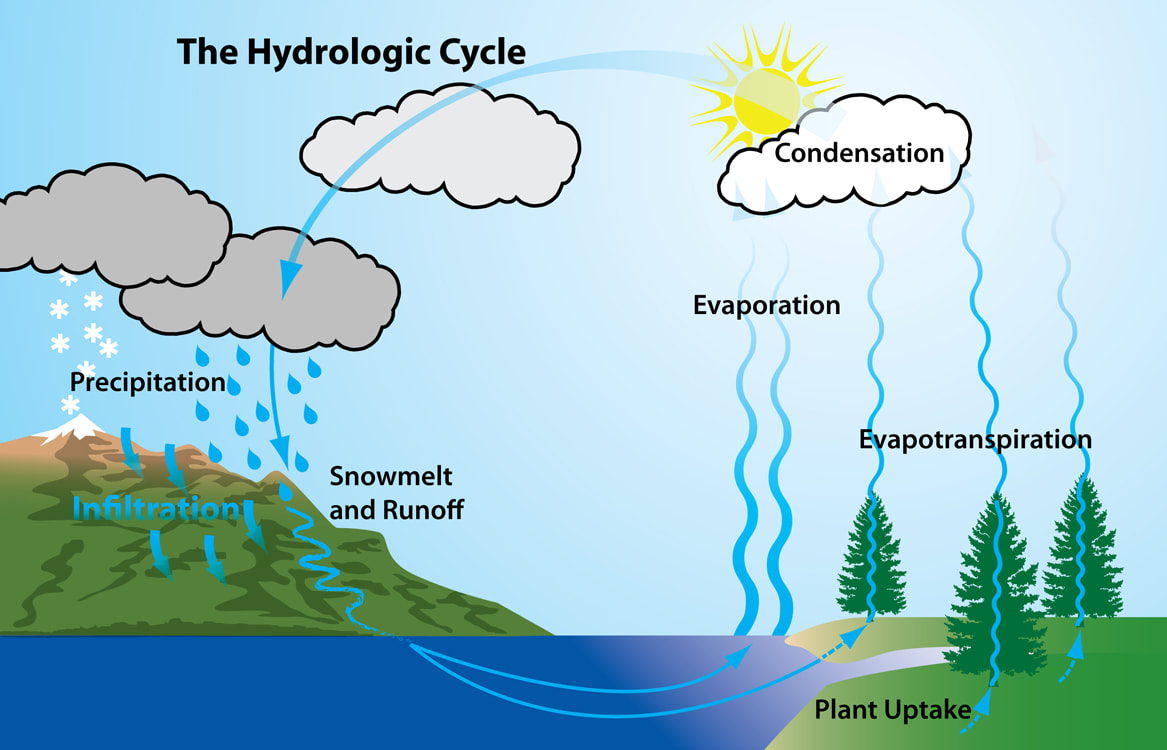“`html
plant Uptake and the Water Cycle
Plant Uptake and the Water Cycle: A Vital Interconnection
The water cycle, a continuous process of water movement on, above, and below the surface of the Earth, is fundamental to all life. Plants play an indispensable role in this cycle, acting as crucial intermediaries that facilitate the transfer of water from the soil to the atmosphere. This intricate relationship, known as plant uptake, involves a complex interplay of physical and biological processes that drive the movement of water through plants and contribute significantly to regional and global hydrological cycles.
The Fundamentals of Plant Water Uptake
Plant water uptake begins with the absorption of water from the soil by plant roots. This process is driven by the water potential gradient, a measure of the free energy of water, which is generally lower in the roots than in the surrounding soil. This gradient encourages water to move from areas of high water potential (the soil) to areas of low water potential (the roots).
Root Structure and Function

Plant roots are highly specialized structures designed to maximize water absorption. Root hairs, tiny extensions of root epidermal cells, significantly increase the surface area available for water uptake. These hairs penetrate the soil matrix, creating a larger contact area with soil water. The root system as a whole, comprising primary, secondary, and tertiary roots, provides an extensive network for water exploration and extraction.
Mechanisms of Water Absorption
Water absorption occurs through two primary pathways: the apoplastic and symplastic pathways. The apoplastic pathway involves water movement through the cell walls and intercellular spaces, bypassing the cell membranes. This pathway is relatively rapid but is limited by the Casparian strip, a band of suberin (a water-impermeable substance) in the endodermis that forces water to enter the symplastic pathway. The symplastic pathway involves water movement through the cytoplasm of cells, connected by plasmodesmata, small channels that allow the passage of water and solutes between cells. This pathway allows for greater control over the solutes entering the plant, but is slower.
Transpiration: The Driving Force
Once water is absorbed by the roots, it is transported upwards through the xylem, a specialized vascular tissue, to the leaves. Transpiration, the process of water evaporation from leaf surfaces, creates a tension gradient that pulls water up the xylem column. This transpiration pull is the primary driving force for water movement in plants.
Stomata and Transpiration Control
Stomata, tiny pores on the leaf surface, regulate the exchange of gases between the plant and the atmosphere. While stomata allow for the uptake of carbon dioxide for photosynthesis, they also facilitate water loss through transpiration. Guard cells, specialized cells surrounding the stomata, control the opening and closing of these pores, thereby regulating transpiration rates. Environmental factors such as light intensity, temperature, humidity, and wind speed influence stomatal conductance and transpiration.
The Cohesion-Tension Theory

The cohesion-tension theory explains how water moves up the xylem against gravity. Water molecules exhibit strong cohesive forces, sticking together due to hydrogen bonds. The tension created by transpiration pull at the leaf surface is transmitted down the xylem column, pulling water upwards. The cohesive forces between water molecules maintain a continuous column of water, enabling efficient transport from the roots to the leaves.
Plant Uptake and the Water Cycle: A Broader Perspective
Plant uptake plays a crucial role in the broader water cycle, influencing various hydrological processes at local, regional, and global scales.
Evapotranspiration
Evapotranspiration, the combined process of evaporation from soil and transpiration from plants, is a significant component of the water cycle. Plants contribute substantially to evapotranspiration, returning a large portion of absorbed water to the atmosphere. This process influences atmospheric humidity, cloud formation, and precipitation patterns.
Influence on Regional Hydrology
Plant cover significantly affects regional hydrology. Forests, for example, have high evapotranspiration rates, returning a substantial amount of water to the atmosphere. Deforestation can disrupt these hydrological processes, leading to changes in rainfall patterns, soil moisture, and streamflow. Plant uptake also influences groundwater recharge, as water absorbed by roots can percolate through the soil profile and replenish aquifers.
Impact on Global Climate

At a global scale, plant uptake and evapotranspiration influence the Earth’s energy balance and climate. Forests, particularly tropical rainforests, play a vital role in regulating atmospheric carbon dioxide levels and influencing global temperature. Changes in land use, such as deforestation and afforestation, can have significant impacts on regional and global climate patterns.
Factors Affecting Plant Water Uptake
Several factors influence plant water uptake, including soil properties, environmental conditions, and plant physiological characteristics.
Soil Properties
Soil texture, structure, and water-holding capacity influence water availability for plant uptake. Sandy soils, for example, have low water-holding capacity, while clay soils have high water-holding capacity but may restrict water movement. Soil salinity and pH can also affect plant water uptake, as high salt concentrations can reduce water potential and limit water absorption. Soil compaction can also reduce water uptake by restricting root growth.
Environmental Conditions
Environmental factors such as temperature, humidity, light intensity, and wind speed influence transpiration rates and, consequently, water uptake. High temperatures and low humidity increase transpiration, while low temperatures and high humidity decrease it. Light intensity affects stomatal opening and photosynthesis, influencing water demand. Wind speed can increase transpiration by removing humid air from the leaf surface.
Plant Physiological Characteristics
Plant species vary in their water uptake capacity and transpiration rates. Xerophytes, plants adapted to arid environments, have specialized adaptations to minimize water loss, such as thick cuticles, reduced leaf surface area, and deep root systems. Mesophytes, plants adapted to moderate environments, have intermediate water uptake and transpiration rates. Hydrophytes, plants adapted to aquatic environments, have specialized adaptations for water uptake and gas exchange in water.
Adaptations for Water Conservation
Plants have evolved various adaptations to conserve water, particularly in arid and semi-arid environments.
Structural Adaptations
Structural adaptations include reduced leaf surface area, thick cuticles, sunken stomata, and the presence of trichomes (tiny hairs) on leaf surfaces. These adaptations reduce transpiration rates by minimizing water loss through stomata and creating a boundary layer of humid air around the leaf.
Physiological Adaptations
Physiological adaptations include the ability to close stomata during periods of water stress, the accumulation of compatible solutes to maintain cell turgor, and the development of deep root systems to access deeper water sources. Some plants also exhibit Crassulacean acid metabolism (CAM), a specialized photosynthetic pathway that minimizes water loss by opening stomata at night and closing them during the day.
The Importance of Plant Uptake in Ecosystem Function
Plant uptake is essential for ecosystem function, influencing nutrient cycling, primary productivity, and ecosystem resilience.
Nutrient Cycling
Plant uptake facilitates the movement of nutrients from the soil to plants. Water acts as a solvent, carrying dissolved nutrients such as nitrogen, phosphorus, and potassium to the roots, where they are absorbed along with water. This process is crucial for plant growth and development.
Primary Productivity
Water availability is a major limiting factor for primary productivity, the rate at which plants produce organic matter. Plant uptake ensures a continuous supply of water for photosynthesis, supporting plant growth and biomass production. This, in turn, supports other trophic levels in the ecosystem.
Ecosystem Resilience
Plant uptake contributes to ecosystem resilience, the ability of an ecosystem to withstand and recover from disturbances. Healthy plant communities enhance soil water infiltration, reduce soil erosion, and regulate streamflow, contributing to ecosystem stability and resilience.
Conclusion
Plant uptake is a critical component of the water cycle, influencing various hydrological processes and ecosystem functions. Understanding the intricate relationship between plants and water is essential for managing water resources, conserving biodiversity, and mitigating the impacts of climate change. By recognizing the vital role of plants in the water cycle, we can promote sustainable land management practices and ensure the long-term health of our planet.
“`
